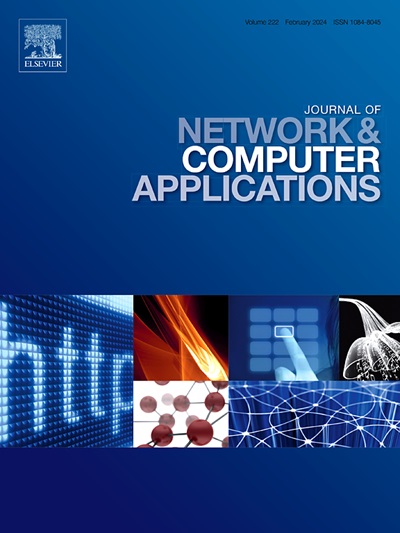Energy-efficient IoT-based tracking and management system for patients with cognitive diseases
IF 8
2区 计算机科学
Q1 COMPUTER SCIENCE, HARDWARE & ARCHITECTURE
引用次数: 0
Abstract
The proliferation of Internet of Things (IoT) technologies has created new opportunities for healthcare applications, particularly when it comes to tracking and assisting people with cognitive diseases like autism and Alzheimer’s. In order to meet the unique requirements of individuals with Alzheimer’s and autism, this article suggests a novel energy efficient IoT tracking model that ensures ongoing accurate and reliable monitoring. To develop a complete tracking system, the suggested model combines machine learning algorithms with energy-efficient sensors. Optimizing energy efficiency receives special attention because continuous patient monitoring depends on the device operation under different environmental conditions. This methodology optimizes the energy efficiency of the system using a 1-Deep Convolutional Neural Network (DCNN) and Lagrange optimization algorithms. The primary objective is to ascertain the ideal distance required for sending emergency signal for patients’ wearable IoT devices to travel in the event that their medical problems cause them to become misplaced. The proposed method aims to enhance the overall performance of the communication system by integrating mathematical optimization principles with modern deep learning techniques. This will contribute to the development of more dependable and efficient emergency response mechanisms. This research proposes an energy-efficient IoT tracking methodology that makes a significant contribution to the healthcare technology space. Through addressing the particular difficulties that patients with Autism and Alzheimer’s disease present, the model provides a viable way to improve care, encourage independence, and lessen the workload for carers in an energy-efficient way.
基于节能物联网的认知疾病患者跟踪管理系统
物联网(IoT)技术的普及为医疗保健应用创造了新的机会,特别是在跟踪和帮助患有自闭症和阿尔茨海默氏症等认知疾病的患者方面。为了满足阿尔茨海默氏症和自闭症患者的独特需求,本文提出了一种新型节能物联网跟踪模型,以确保持续准确可靠的监测。为了开发一个完整的跟踪系统,建议的模型将机器学习算法与节能传感器相结合。优化能源效率受到特别关注,因为持续的患者监测取决于设备在不同环境条件下的操作。该方法使用1-深度卷积神经网络(DCNN)和拉格朗日优化算法优化系统的能量效率。主要目标是确定在医疗问题导致患者可穿戴物联网设备错位的情况下,发送紧急信号所需的理想距离。提出的方法旨在通过将数学优化原理与现代深度学习技术相结合来提高通信系统的整体性能。这将有助于建立更可靠和更有效的应急机制。本研究提出了一种节能的物联网跟踪方法,为医疗保健技术领域做出了重大贡献。通过解决自闭症和阿尔茨海默病患者所面临的特殊困难,该模型提供了一种可行的方法,以节能的方式改善护理,鼓励独立性,减轻护理人员的工作量。
本文章由计算机程序翻译,如有差异,请以英文原文为准。
求助全文
约1分钟内获得全文
求助全文
来源期刊

Journal of Network and Computer Applications
工程技术-计算机:跨学科应用
CiteScore
21.50
自引率
3.40%
发文量
142
审稿时长
37 days
期刊介绍:
The Journal of Network and Computer Applications welcomes research contributions, surveys, and notes in all areas relating to computer networks and applications thereof. Sample topics include new design techniques, interesting or novel applications, components or standards; computer networks with tools such as WWW; emerging standards for internet protocols; Wireless networks; Mobile Computing; emerging computing models such as cloud computing, grid computing; applications of networked systems for remote collaboration and telemedicine, etc. The journal is abstracted and indexed in Scopus, Engineering Index, Web of Science, Science Citation Index Expanded and INSPEC.
 求助内容:
求助内容: 应助结果提醒方式:
应助结果提醒方式:


